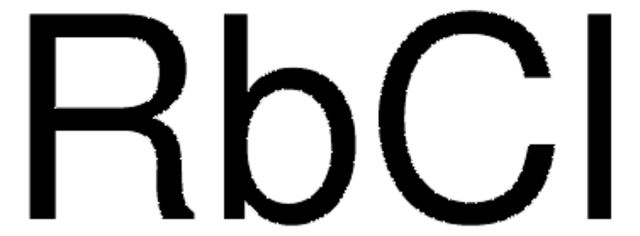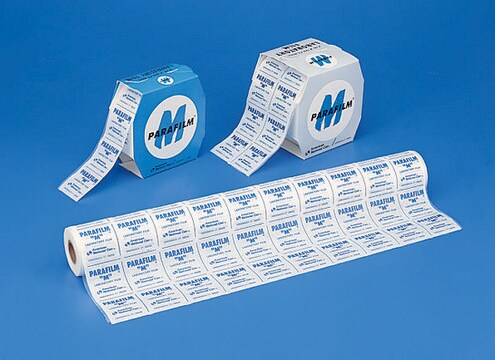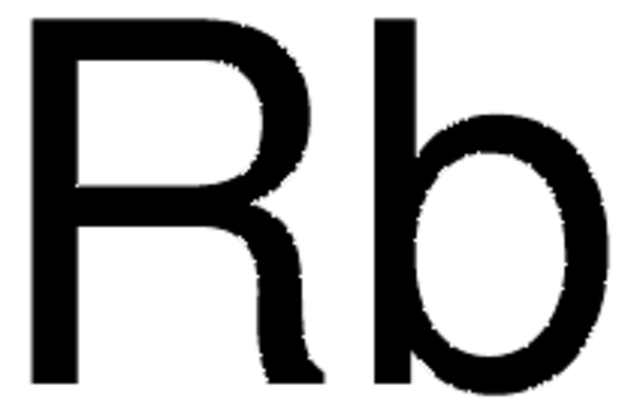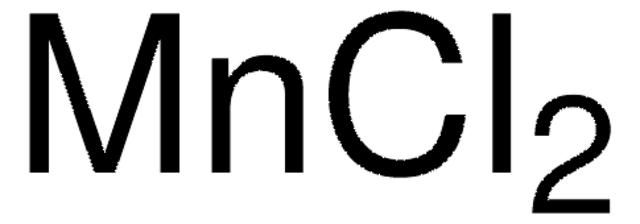83979
Rubidium chloride
BioUltra, for molecular biology, ≥99.0% (AT)
Synonym(s):
RbCl
About This Item
Recommended Products
grade
for molecular biology
Quality Level
product line
BioUltra
Assay
≥99.0% (AT)
form
solid
impurities
DNases, none detected
RNases, none detected
insoluble matter, passes filter test
phosphatases, none detected
proteases, none detected
loss
≤0.2% loss on drying, 110 °C
pH
5.0-8.0 (25 °C, 1 M in H2O)
mp
715 °C (lit.)
solubility
H2O: 1 M at 20 °C, clear, colorless
density
2.8 g/mL at 25 °C (lit.)
anion traces
bromide (Br-): ≤100 mg/kg
iodide (I-): ≤20 mg/kg
sulfate (SO42-): ≤50 mg/kg
cation traces
Al: ≤5 mg/kg
As: ≤0.5 mg/kg
Ba: ≤20 mg/kg
Bi: ≤5 mg/kg
Ca: ≤10 mg/kg
Cd: ≤5 mg/kg
Co: ≤5 mg/kg
Cr: ≤5 mg/kg
Cu: ≤5 mg/kg
Fe: ≤2 mg/kg
K: ≤5000 mg/kg
Li: ≤5 mg/kg
Mg: ≤5 mg/kg
Mn: ≤5 mg/kg
Mo: ≤5 mg/kg
Na: ≤50 mg/kg
Ni: ≤5 mg/kg
Pb: ≤10 mg/kg
Sr: ≤10 mg/kg
Zn: ≤5 mg/kg
λ
1 M in H2O
UV absorption
λ: 260 nm Amax: 0.03
λ: 280 nm Amax: 0.03
SMILES string
[Cl-].[Rb+]
InChI
1S/ClH.Rb/h1H;/q;+1/p-1
InChI key
FGDZQCVHDSGLHJ-UHFFFAOYSA-M
Looking for similar products? Visit Product Comparison Guide
Related Categories
Not finding the right product?
Try our Product Selector Tool.
Storage Class Code
11 - Combustible Solids
WGK
WGK 2
Flash Point(F)
Not applicable
Flash Point(C)
Not applicable
Personal Protective Equipment
Choose from one of the most recent versions:
Already Own This Product?
Find documentation for the products that you have recently purchased in the Document Library.
Customers Also Viewed
Our team of scientists has experience in all areas of research including Life Science, Material Science, Chemical Synthesis, Chromatography, Analytical and many others.
Contact Technical Service











